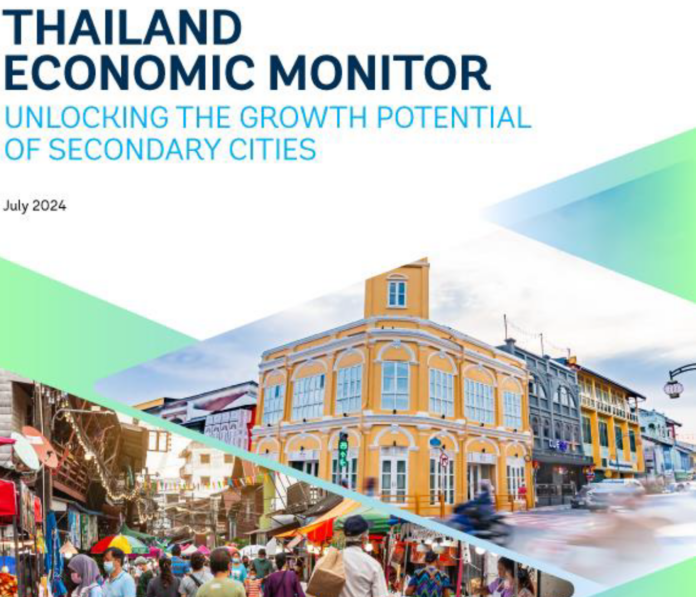As Thailand’s economic recovery lags behind its Southeast Asian neighbors, experts are looking beyond Bangkok to a new engine for growth: the country’s network of secondary cities.
While the COVID-19 pandemic undoubtedly played a role in Thailand’s sluggish economic recovery, experts point to a deeper issue: the country’s overreliance on Bangkok as its sole economic powerhouse. This overdependence leaves Thailand vulnerable to shocks, as seen in the devastating 2011 floods that paralyzed key industries concentrated in the capital.
To achieve robust and sustainable growth, Thailand must look beyond Bangkok and embrace a “portfolio of places” approach to economic development, according to a new country report from The World Bank.
This strategy entails empowering secondary cities – those outside the Bangkok metropolitan area – to become thriving hubs of innovation, investment, and job creation.
Southern Thailand: A Case Study for Growth
Southern Thailand, particularly the Andaman region encompassing Phuket, Phang Nga, Krabi, Trang, Satun, and Ranong, offers a compelling case study for unlocking growth through secondary city development. The region boasts abundant natural resources, a strategic location, and established industries like tourism and agriculture.
Phuket, a world-renowned tourism destination, exemplifies the region’s potential. Its vibrant tourism sector, coupled with a growing logistics industry, has fueled recent economic growth. However, Phuket and other secondary cities face constraints in fully realizing their potential.
The Need for Local Empowerment
A critical roadblock to secondary city development is the over-centralization of power and resources. Local Administrative Organizations (LAOs) often lack the autonomy to plan infrastructure, generate revenue, and access financing mechanisms tailored to local needs.
The World Bank’s Thailand Urban Infrastructure Financing (TUIF) assessment revealed that while Andaman cities are generally creditworthy, they lack experience and authority in utilizing financing tools like borrowing and public-private partnerships (PPPs). This dependence on national government funding for infrastructure limits their ability to respond to local demands and seize growth opportunities.
A New Paradigm for Local Infrastructure Finance
Experts advocate for a paradigm shift towards greater local autonomy, enabling secondary cities to become self-financing entities capable of driving their own infrastructure development.
This would involve granting LAOs:
- Control over local taxes: Enabling cities to generate revenue through robust and reliable local revenue instruments like property taxes and user fees.
- Access to financing mechanisms: Empowering cities to utilize municipal bonds and PPPs to leverage local revenue streams for infrastructure investments.
- Greater planning authority: Decentralizing infrastructure planning to LAOs, allowing them to make decisions best suited to local priorities and market demands.
Lessons from Global Experience
The success of decentralized infrastructure financing models in countries like Poland and South Africa offers valuable insights for Thailand. Both countries underwent significant transformations, devolving power and resources to local governments, with positive results for economic growth and development. However, implementing a similar model in Thailand would require careful consideration of the country’s unique context, including its political and institutional landscape.
The Path Forward: Collaboration, Capacity Building, and Visionary Leadership
Transitioning to a system where secondary cities are empowered to self-finance their infrastructure will require:
- Collaboration: Between national and local governments, the private sector, and civil society to ensure smooth implementation and effective resource allocation.
- Capacity building: To equip LAOs with the skills and knowledge necessary for long-term financial planning, project management, and engaging in PPPs.
- Visionary leadership: To champion this paradigm shift, build consensus, and navigate potential resistance from entrenched interests.
A Future of Shared Prosperity
By embracing the potential of its secondary cities, particularly those in the dynamic southern region, Thailand can unlock a future of more balanced, resilient, and inclusive growth. Empowering local governments to take charge of their own development is not just about infrastructure; it’s about creating a future where all of Thailand’s citizens have the opportunity to thrive.


